02 Jan Rio de Janeiro’s Iconic Sights

JILL WEINLEIN
After graduating from UCLA, JIll traveled the world looking for unique destinations. She’s been writing about her travels for almost 30 years in various publications.
She writes a weekly restaurant review for the Beverly Press and Park LaBrea News. It’s inserted into the Los Angeles Times every Thursday and delivered to subscribers from Hancock Park to Beverly Hills, Hollywood Hills to the Wilshire Corridor.
Rio de Janeiro’s Iconic Sights
BY JILL WEINLEIN
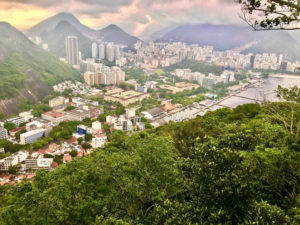 “Tall and tan and young and lovely, the girl from Ipanema goes walking, and when she passes each one, she passes goes “a-a-a-h.” This Grammy winning Brazilian bossa nova and jazz song, “Girl from Ipanema” by Tom Jobim and Vinicius de Moraes brought awareness and new visitors to Rio de Janeiro in the 1960s.
“Tall and tan and young and lovely, the girl from Ipanema goes walking, and when she passes each one, she passes goes “a-a-a-h.” This Grammy winning Brazilian bossa nova and jazz song, “Girl from Ipanema” by Tom Jobim and Vinicius de Moraes brought awareness and new visitors to Rio de Janeiro in the 1960s.
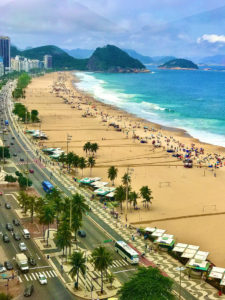 Recently the Brazilian government lifted the tourist visa requirements for citizens of the United States, Canada, Australia and Japan, so now is the time to visit Rio de Janeiro.
Recently the Brazilian government lifted the tourist visa requirements for citizens of the United States, Canada, Australia and Japan, so now is the time to visit Rio de Janeiro.
Last month I flew from Los Angeles to the largest country in South America. Named after the Brazilwood tree, Brazil is the only country in South America that speaks Portuguese. Portugal claimed Brazil in the 1500s, however English is also spoken in most hotels, restaurants and tourist attractions.
I was eager to say “a-a-a-h” while wiggling my toes in the sand on Ipanema beach, learn about the “music and passion” at Copacabana Beach, and see the iconic Christ the Redeemer.
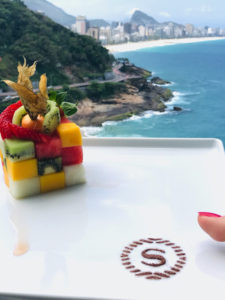 Where to stay
Where to stay
The only hotel right on the beach is Sheraton Rio de Janeiro. Built 45 years ago as the first international hotel chain in Rio, it’s located at the end of Leblon Beach, close to the other famous Rio de Janeiro beaches.
Every guest room has a balcony overlooking the beaches and ocean. Besides two swimming pools, and a large hot whirlpool, there are multiple restaurants, and a private Sheraton lounge and fine dining restaurant on the top 26th floor. The hotel also offers tennis courts, a gym, a luxury spa, and a kid’s club.
For those looking to stay next to the famous Copacabana beach with its famous wavy mosaic sidewalk, the five-star JW Marriott Hotel in Rio de Janeiro is directly across the street.
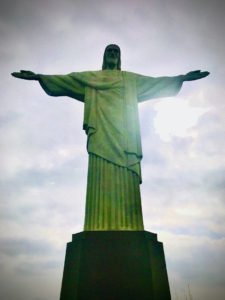 Guests staying at this hotel can enjoy the Moon Lounge rooftop bar, sunbathe and swim at the rooftop outdoor heated swimming pool. The panoramic views are spectacular during the day and evening. Every year, over two million locals and tourists sit on the Copacabana beach to celebrate New Year’s Eve and watch the firework display above the sea.
Guests staying at this hotel can enjoy the Moon Lounge rooftop bar, sunbathe and swim at the rooftop outdoor heated swimming pool. The panoramic views are spectacular during the day and evening. Every year, over two million locals and tourists sit on the Copacabana beach to celebrate New Year’s Eve and watch the firework display above the sea.
Singer and piano player Barry Manilow, along with songwriters Jack Feldman and Bruce Sussman made this beach famous with their song “Copacabana” while staying at the Copacabana Hotel in Rio de Janeiro.
Rio de Janeiro’s most iconic landmark Christ the Redeemer is located on the nearby peak of Corcovado mountain in Tijuca Forest National Park. It is one of the best-known symbols of Brazil, besides the beaches. Built in 1931, the statue celebrates the independence of Portugal, and is one of the New Seven Wonders of the World.
 The best way to reach this welcoming statue is by cog train on a 25-minute ride through the forest. Views while climbing to the top include the Maracana Stadium, where football (soccer) legend Pele scored his 1,000th goal in 1969. As the popular sport in Brazil, the national team is among the best in the world, winning the World Cup a record 5 times. Renovated in 2014 for the World Cup Final, this was the stage for the opening and closing ceremonies of the 2016 Rio Olympic Games.
The best way to reach this welcoming statue is by cog train on a 25-minute ride through the forest. Views while climbing to the top include the Maracana Stadium, where football (soccer) legend Pele scored his 1,000th goal in 1969. As the popular sport in Brazil, the national team is among the best in the world, winning the World Cup a record 5 times. Renovated in 2014 for the World Cup Final, this was the stage for the opening and closing ceremonies of the 2016 Rio Olympic Games.
Another view is a huge heart-shaped lake surrounded by green mountains that was the rowing complex during the 2016 Olympics.
Also in Rio de Janeiro is a beautiful Botanical Gardens created in 1808 by Dom Joao VI for the Royal family of Portugal. This park is filled with a variety of native plant species and greenery from all over the world. Visit the serene lake topped with water lilies, the orchid nursery, towering waterfall, honey bee garden, and rows of 100 year old rare Imperial palm trees.
During the Rio 2016 Olympic Games, the Guinness World Records officially recognized the world’s largest spray painted mural along abandoned warehouses by the third largest port in Brazil. Titled ‘Etnias’ (Ethnicities) by Brazilian street artist Eduardo Kobra and his team, all of the beautiful faces have roots in the African slave communities of Brazil. Stroll along the long promenade to visit the new restaurants, hotels and bars opening near the port.
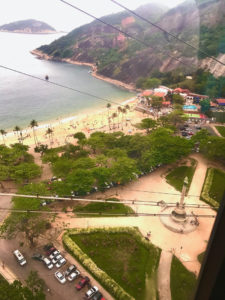 Another iconic spot in Rio de Janeiro is Sugar Loaf mountain located at the entrance of the city’s Guanabara Bay. Jazz musician Herb Alpert recorded the song ‘Sugarloaf’ for his 1982 album Fandango. Locals and visitors board a Swiss-made bubble-shaped cable car to Morro da Urca (Urca Hil), and then transfer to another cable car to ride up to the top of Sugar Loaf Mountain. The rides offer 360° views of the surrounding city, vast Atlantic Ocean, famous beaches, boat harbor and Pedra de Gavea mountain. After exploring the top, walk down a paved path to the cable cars and stop at the Wish Tree. Locals say if you make a wish while walking between the unique twin tree trunks, your wish might come true.
Another iconic spot in Rio de Janeiro is Sugar Loaf mountain located at the entrance of the city’s Guanabara Bay. Jazz musician Herb Alpert recorded the song ‘Sugarloaf’ for his 1982 album Fandango. Locals and visitors board a Swiss-made bubble-shaped cable car to Morro da Urca (Urca Hil), and then transfer to another cable car to ride up to the top of Sugar Loaf Mountain. The rides offer 360° views of the surrounding city, vast Atlantic Ocean, famous beaches, boat harbor and Pedra de Gavea mountain. After exploring the top, walk down a paved path to the cable cars and stop at the Wish Tree. Locals say if you make a wish while walking between the unique twin tree trunks, your wish might come true.
Dining options
Brazilians are known for their beautiful fresh fruits and vegetables. The national dish is feijoada, a delicious hearty black bean and mixed meat stew. Enjoy it with gluten-free Pão de Queijo cheese bread made with cassava flour. It’s crispy on the outside, and full of flavor inside. Empadas filled with beef, chicken with cream cheese, or hearts of palm are popular too. Finish with one of the most popular beach snacks, the super-food açaí sorbet.
After spending a few days at this popular Brazilian beach city, your senses will be awakened by the appealing sights, flavors and sounds of Rio de Janiero.




Sorry, the comment form is closed at this time.